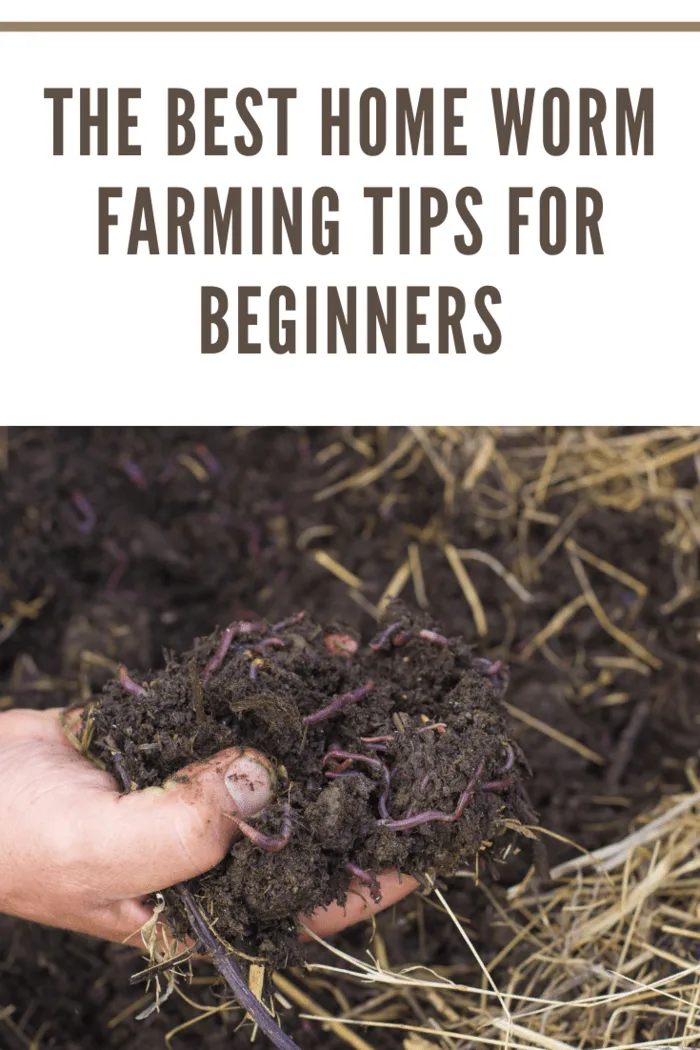A lot of home worm farming tips for beginners come from the experience of people who have extensive knowledge in this field, experienced worm farmers can offer a lot of good home worm farming tips for beginners, which you can apply for your own home garden.
One of the most common mistakes with home worm farming is that most people do not know how to set up a worm farm properly. They don’t know where to begin their search for the right place for the farm. You can find a lot of information about worm farming in books and online.
In the following text, you’ll read some great tips for starting your first worm farm.

Worm Farm Setup
If you’re one of the many people interested in starting a new farm but do not know how to set up a worm farm, then you should be happy to know that it’s not as difficult as it sounds.
In fact, with a little effort, a worm farm can be set up in about one day.
This will include a bucket, a net, and a few good worm bins.
Once you have these basic materials, then you will have all that you need to get started.
The next thing that you need to do is purchase some worm castings.
This is usually sold in bulk, so make sure that you take advantage of this.
It will save you both time and money.
There are many different types of places that you can use for your worm farm, but you’ll need to make sure that you have an area that is completely dry and cool.
Once you have chosen your location, you’ll first need to purchase your worms.
But you’ll also need to keep them fed regularly so they can grow properly for your compost.
Live Red Wiggler Composting Worms
Many wonder what the difference is between Red Wiggler composting worms and other types of worm composting.
The most important aspect of using Red Wigglers for your worm compost is to know when to pull them out of the pile.
They are great at decomposing plant waste, but they are quite delicate.
You don’t want them getting eaten by critters like squirrels and other animals.
A downside to using Red Wiggler composting worms is that you must purchase additional feeders to keep them fed and active during the colder months.
This is especially true if you live in an area where temperatures dip below freezing in the winter.
You also need to make sure that you feed the worms often enough to keep them from eating their way out of the pile.
You need to consider how many worms you want in your worm compost pile.
You don’t want to overload your compost pile, or the worms will fight over the scraps left behind.
If you put together the wrong types of worms for your compost pile, they will fight over it instead of decomposing it.
Worms that are more than half the size of your bin will do very well in a large bin, while worms that are half the size of the bin will do just fine in a smaller one.
Feeding Your Worms
When you first get worms, you will need to keep a close eye on them and make sure that they are feeding well and growing properly.
The first thing that you can do is feed them properly. They should have enough food for their needs every day.
In the case of larger worms, you should feed them about twice a day.
You don’t want to feed them too often, and you don’t want to feed them too little, either.
Regarding what kind of food to feed your worm, you should always try to get one that contains high amounts of protein because it’s easier for your worms to digest.
They will also grow faster and healthier if they are getting enough protein, so do just that.
You should feed your worms other food types: vegetables and fruit.
These types of food will provide them with the high nutritional balance they need.

Worm Composting Accessories
The first accessory that many people choose is a worm bin.
A worm bin is handy because it helps to keep worms dry and warm.
It is also a good place to house your compost bins, as these will also be kept in the correct environment.
Some people use a worm compost bin simply as a storage area for their compost materials.
This is where most worm compost comes from, but you need to ensure that the bin has enough space for the worms to move around.
This will ensure that they’re able to do their jobs quickly.
As the worms decompose these waste products, they create a good environment for the fungi, bacteria, and plants to grow in.
These all help to enhance your worm compost.
You may not need any other accessories when using your worm bin.
However, some can add to the composting experience, says Apartment Therapy.
Conclusion
Home worm farming is one of the most popular hobbies people can indulge in nowadays.
It’s important that you’re careful of the conditions when you’re growing worms because you don’t want to end up with an unhealthy environment that could have adverse effects on your worms.
